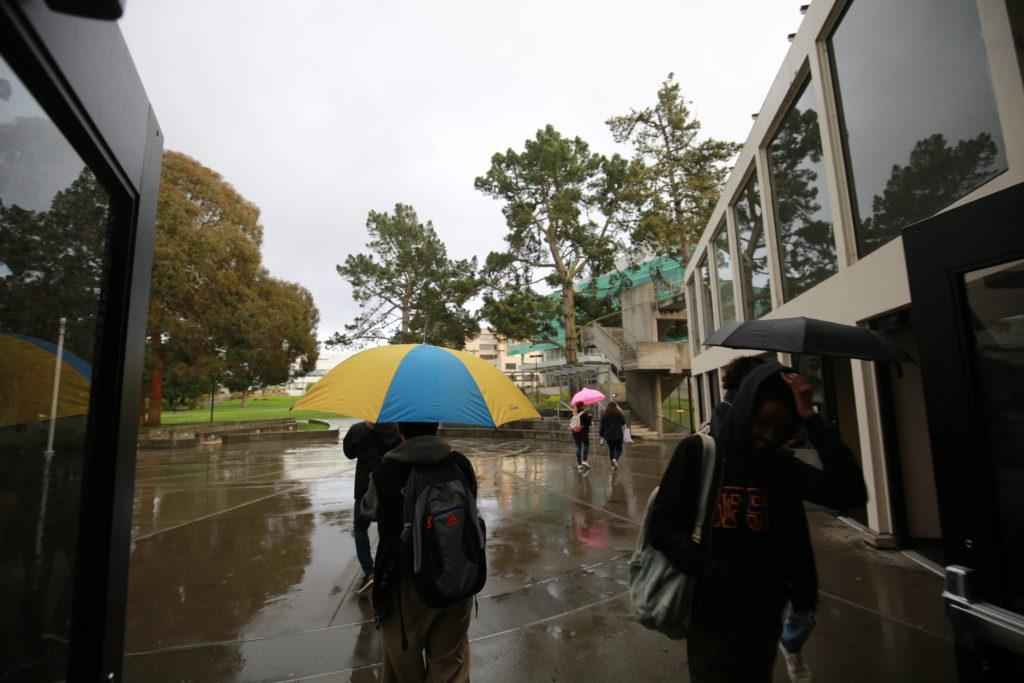A sudden drop in temperatures brought rain, snow, and hail to the Bay Area for the first week of February, taking many residents by surprise with no signs of stopping in the days to come.
Bay Area residents reported chunks of hail pelleting the ground after temperatures dropped to as low as 40 degrees on Feb. 5. Data from the National Weather Service showed the normal temperature for this time
of year ranges in the mid-40s.
SF State meteorology professor John Monteverdi said while hail and snow are rare, they are normal weather patterns and are not caused by climate change.
“In a typical lifespan someone is going to experience it maybe hundreds of times,” Monteverdi said. “But [to] a person who has only been here a few years, it seems unusual to have
such cold and snow to low elevations.”
There is a good chance showers will continue this upcoming Wednesday, Thursday and Friday following the recent storms, according to Steve Anderson, a meteorologist for the National Weather Service.
“We’re keeping an eye on a weather system developing now for next weekend,” Anderson said. This system, known as an “atmospheric river”, has the potential to increase rainfall in the Bay Area, according to Anderson.
Snow blanketed Bay Area peaks such as Mount Hamilton, Mount Helena and Mount Diablo during the cold spurt. The frozen flakes fluttered down as low as 920 feet above sea level and dusted San Francisco’s
Twin Peaks early Feb. 5. Anderson said the snow did not last long and seeing snow this heavy again will be highly unlikely because the last time the Bay Area experienced such conditions was in 2011.
Temperatures are still bound to chap the Bay Area, but will at least remain above freezing, according to the National Weather Service.
The daytime highs in the region this past week were on average five to seven degrees cooler than usual for this time of year. San Francisco received 2.1 inches of rain in the first eight days of February, which is
slightly above average.
“If it feels a little cooler than normal, then you are correct,” Anderson said. “It is cooler than normal, but only by a few degrees.”
Even slight differences in temperature and precipitation are causing some local organizations to take action.
San Francisco Public Works provided free sandbags for San Francisco residents whose homes are prone to flooding on Feb. 2.
“With a lot of rain there are a lot of leaks,” said Jon Hardisty, a painter for SF State’s maintenance department.
The recent change in weather caused many University buildings to leak and require patching and painting by the faculty.
The change in weather also affected many homeless in San Francisco, as shelters braced for an influx of people seeking refuge from the elements.
“When the weather becomes extreme, an alert is sent out and we provide an additional 25 mats,” said Shari Wooldridge, executive director of the Society of St. Vincent de Paul. “Most days we are at capacity of the
340 beds we have.”
Scott W. Walton, manager of the Shelters and Navigation Centers, a program associated with San Francisco’s Department of Homelessness and Supportive Housing (HSH), sent a memo on Feb. 7 stating that all
HSH partners should focus on wellness checks of individuals in need of medical treatment or emergency services. The HSH also provides assistance for those seeking shelter.
The San Francisco Homeless Outreach Team will also be providing socks and ponchos to homeless, according to the memo.
“The weather is around us, it makes a difference every day,” Monteverdi said. “It can be catastrophic…ultimately people are worried about that because it could affect their lives.”








